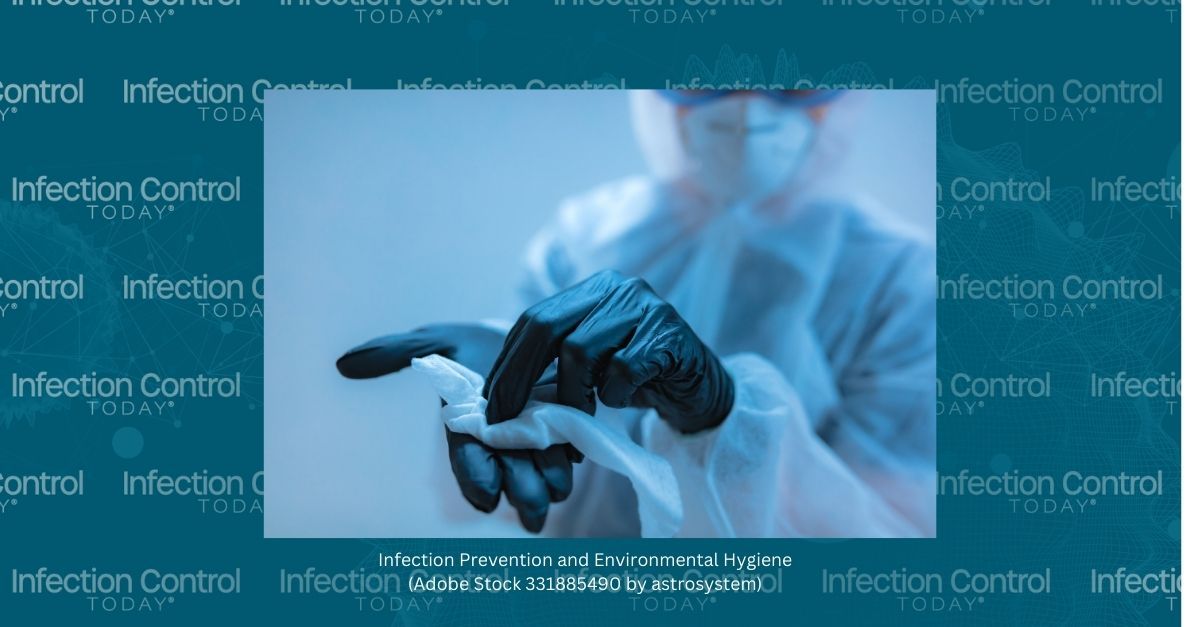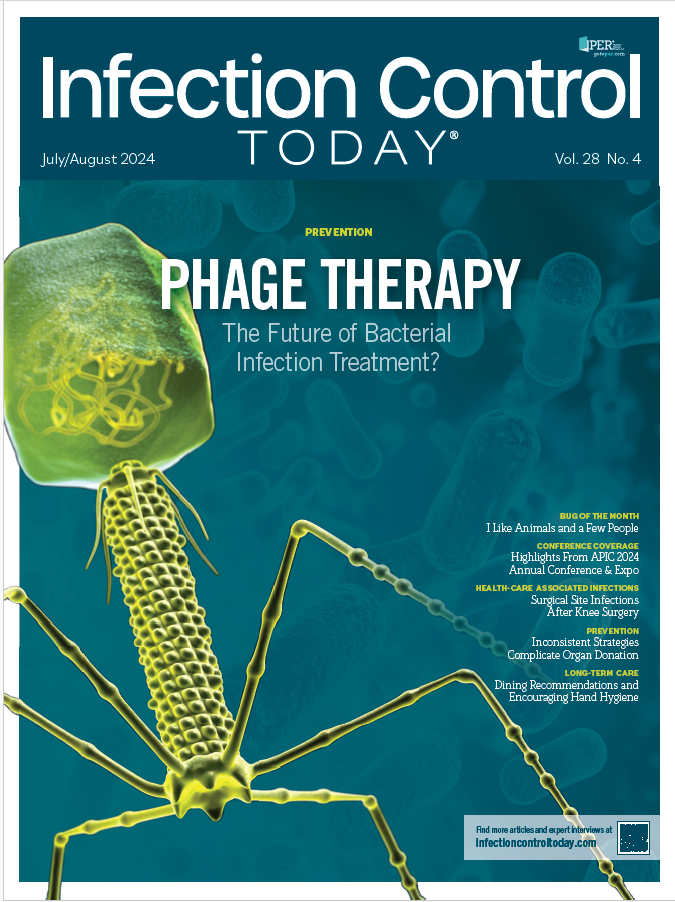The Case for Merging Environmental Services and Infection Prevention Departments in Hospitals
Preventable health care-associated infections (pHAIs) cost US health care facilities up to $123 million per day.
Infection prevention and environmental hygiene
(Adobe Stock 331885490 by astrosystem)

According to the AMA Journal of Ethics, if the hospital’s Infection Prevention (IP) department is the architect of infection prevention policy, then Environmental Services (EVS) workers interpret the blueprint and carry out the general procedures for buttressing the all-important barriers between the patients and disease. They share a common mission: to create and maintain a clean, safe, and sanitary environment for patients, staff, and visitors. Despite this, EVS and IP often operate as 2 separate silos in health care facilities—a suboptimal scenario for patient outcomes and the safety of staff and visitors, especially when it comes to preventable health care-associated infections (pHAIs).
The CDC reports that 1 in 31 hospitalized patients have a pHAI at any given time, costing up to $123 million daily. A patient’s risk of acquiring a pHAI can almost quadruple, depending on whether the prior room occupant was infected. Thorough cleaning and disinfection are crucial for minimizing pHAIs. Unfortunately, this process, carried out by EVS departments and championed by IPs, is often underresourced. It is time to change how we value EVS and IP to reduce the extreme costs pHAIs exact on patients and health care facilities.
The impact of pHAIs on patient outcomes, finances, and public health
According to The Leapfrog Group, pHAIs increased significantly during the COVID-19 pandemic. The average risk of 3 pHAIs—Methicillin-resistant Staphylococcus aureus (MRSA), central line-associated bloodstream infections (CLABSI), and catheter-associated urinary tract infections (CAUTI)—spiked to a 5-year high in hospitals during the COVID-19 pandemic and remain high.
Health care facilities aren’t dedicating enough resources to reduce pHAIs because they lack a clear picture of the cost associated with such infections. Leading to prolonged hospital stays and increased costs for treatment, pHAIs result in a significant financial burden. That’s not to mention the legal repercussions and reputational damage left in their wake.
Estimates suggest that the societal impact of pHAIs costs US acute care hospitals $147 billion annually, making them a formidable challenge to the financial sustainability of health care institutions. A single MRSA infection can cost health care facilities up to $30,000. More complex infections, such as Acinetobacter bauumanii, may cost up to $203,000 per infection. Finally, many pHAIs—including, Clostridioides difficile, carbapenem-resistant Enterobacteriaceae, Candida auris, MRSA, and Mycobacterium tuberculosis—are caused by antimicrobial-resistant organisms. The CDC considers antimicrobial resistance an urgent global public health threat.
Reducing pHAIs in health care facilities will improve patient safety, reduce excess health care costs, and combat antimicrobial resistance and its complications.
Making the case for resources and funding
EVS and IP departments are at the frontlines of the battle to reduce pHAIs. Despite their essential roles, they remain underfunded and lacking resources because they do not generate direct revenue. They face challenges ranging from limited staffing and obsolete equipment to insufficient training and outdated protocols. For example, approximately two‐thirds of EVS employees report working in chronically understaffed positions with an average pay of just $13 per hour in the US.
During the APIC (Association for Professionals in Infection Control and Epidemiology) 2023 Spring Leadership Forum, there was some discussion about the ongoing perception that IPs are not valued, though we did learn that they are increasingly being heard in the C-suite. IPs want to expand their influence, particularly on the financial side. They can do so by offering a clear view of the cost of pHAIs and the benefits of reducing them.
Savvy health care facilities are taking a more holistic view of the impact of pHAIs to assess the actual financial benefit of fully staffed and equipped IP and EVS departments. Such hospitals account for all the physical and medical services provided to the pHAI patient, including the high cost of incremental patient days, additional support staff required, cost to treat, potential litigation costs, and harm to hospital goodwill. This reporting offers a more comprehensive perspective of the true cost savings—and bottom-line contribution—delivered by EVS and IP. Armed with this information, hospitals can make the case to fully fund and staff IP and EVS departments.
Historically, pHAI prevention has been regarded as a soft cost or cost avoidance. An enterprise-wide, multimodal intervention approach needs to be adopted by the C-suite.
Benefits of merging IP with EVS in acute care hospitals
Going a step further, acute care hospitals should consider merging the expertise of IP with the diligence of EVS into one unified department. Beyond the immediate advantages of bolstering infection prevention measures, this collaboration opens avenues for demonstrating the financial impact of pHAIs on health care institutions. By presenting a unified front, IP and EVS can showcase the cost-effectiveness of preventative measures, potentially securing more funding for vital resources, including adequate staffing, training, and the appropriate tools.
Merging IP with EVS in acute care hospitals would result in a reduction in pHAIs, a decrease in costs, and an increase in patient satisfaction. The benefits are:
Improved communication and collaboration between EVS and IP result in a more cohesive approach to infection control and environmental surface processing.
Increased efficiencyand reduced duplication of efforts would yield cost savings and increased efficiency. Reducing penalties related to HCAHPS scores requires sustained efforts in enhancing patient satisfaction and safety. By merging IP and EVS, health care facilities can improve their overall performance, reduce penalties, and provide a better experience for patients.
Improved staff training and sharing of knowledge and expertise, resulting in improved infection control measures. Training is not a 1-time event; hospitals should constantly reinforce process quality improvements while updating training as new hires are added.
Consistent processing (cleaning and disinfection) and infection prevention protocols for cleaning and disinfection across the many different patient care environments that are closely aligned with infection control guidelines. The result would be more effective programs and a reduction inpHAIs. Also, EVS and IP speaking as 1 voice will have greater influence throughout the hospital.
Enhanced quality control and oversight of processes for disinfection and infection control measures, leading to improved quality control. Adopting advanced tools, hospitals can quickly and efficiently offer quality assurance monitoring, corrective actions, and education to improve results. Without regular daily monitoring, standards will decline.
Improved accountability for maintaining high hygiene and infection control standards, resulting in higher compliance with regulations and standards.
Enhanced training and education for staff members would improve knowledge and skills related to infection prevention and control.
As the toll of pHAIs on patient outcomes, hospital finances, and public health continues to mount, it is imperative to recognize the importance of EVS and IP departments while addressing their persistent lack of resources. Short-term thinking on cost savings must be replaced with recognizing that long-term infection prevention will create a much better patient environment. As a united front, IP and EVS can fortify defenses against pHAIs and make a compelling case for the financial benefits of proactive infection prevention. Now is the time to invest in these critical “first-line-of-defense” health care workers and a future where patient safety, sustainability, financial stability, and public health are seamlessly interconnected.

